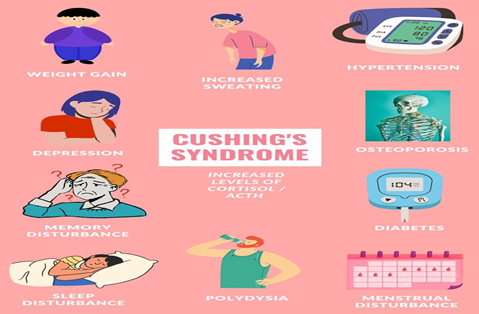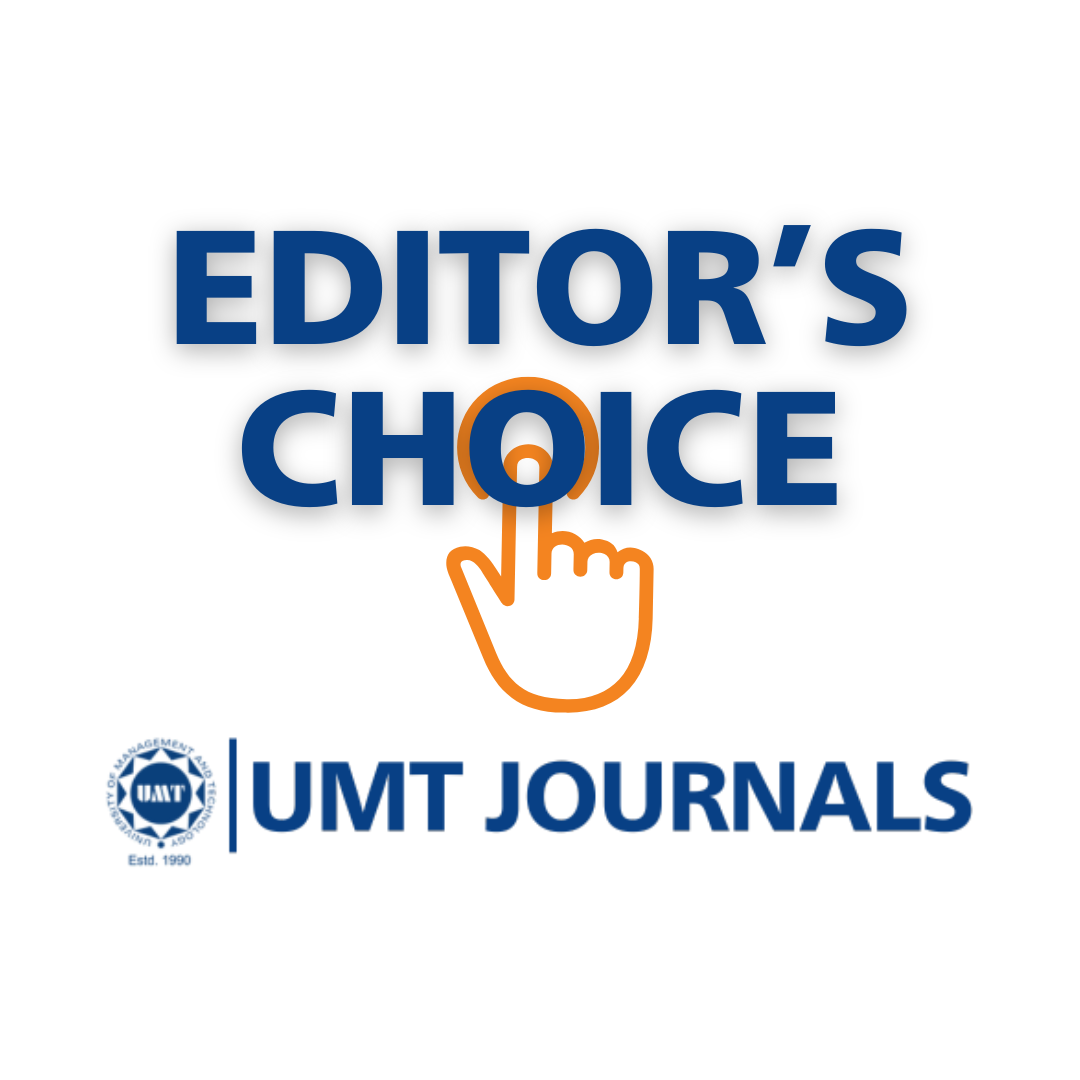Cushing’s Syndrome (CS) in Children: Pathophysiology, Clinical Features, Diagnostic, and Therapeutic Strategies
Abstract
 Abstract Views: 25
Abstract Views: 25
A rare condition known as Cushing’s Disease (CD) causes increased morbidity or mortality. It is an endocrine illness that presents differently from other endocrine disorders, making it difficult for doctors to control. Hence, early detection and treatment are essential. Significant fetal and mental complications during pregnancy are linked to Cushing’s Syndrome (CS). Except in the late trimester, surgery is its preferred method of treatment during pregnancy, with medication therapy as a backup. Therapeutic methods such as anti-cortisol medication, bilateral adrenalectomy, or radiation procedures may, therefore, be required to prevent long-term dangers of hypercortisolism, such as hirsutism, moon face, facial plethora, and obesity. Endogenous hypercortisolism increases the risk of cardiovascular metabolic symptoms, osteoporosis, respiratory diseases, psychological difficulties, and infections, while also inducing a high rate of morbidity or mortality.
Downloads
References
2. Güemes M, Murray PG, Brain CE, et al. Management of Cushing syndrome in children and adolescents: experience of a single tertiary centre. European journal of pediatrics 2016, 175(7):967-976
3. Chan LF, Storr HL, Grossman AB, et al. Pediatric Cushing's syndrome: clinical features, diagnosis, and treatment. Arquivos Brasileiros de Endocrinologia & Metabologia 2007, 51:1261-1271
4. Storr HLSavage MO Management of endocrine disease: paediatric Cushing's disease. European Journal of Endocrinology 2015, 173(1):R35-R45
5. Nayak S, Dabadghao P, Dixit P, et al. Cushing's Disease in Children: A Review. Neurology India 2020, 68(7):52
6. Hodes A, Meyer J, Lodish MB, et al. Mini-review of hair cortisol concentration for evaluation of Cushing syndrome. Expert review of endocrinology & metabolism 2018, 13(5):225-231
7. Savage MO, Storr HL, Chan LF, et al. Diagnosis and treatment of pediatric Cushing’s disease. Pituitary 2007, 10(4):365-371
8. Neychev V: Cushing Syndrome: Presentation, Diagnosis, and Treatment, Including Subclinical Cushing Syndrome. In: Management of Adrenal Masses in Children and Adults. edn. Edited by Kebebew E. Cham: Springer International Publishing; 2017: 159-178.
9. Young J, Haissaguerre M, Viera-Pinto O, et al. MANAGEMENT OF ENDOCRINE DISEASE: Cushing’s syndrome due to ectopic ACTH secretion: an expert operational opinion. European Journal of Endocrinology 2020, 182(4):R29-R58.10.1530/eje-19-0877
10. Raff H, Sharma STNieman LK Physiological basis for the etiology, diagnosis, and treatment of adrenal disorders: Cushing’s syndrome, adrenal insufficiency, and congenital adrenal hyperplasia. Comprehensive Physiology 2014, 4(2):739
11. Scaroni C, Zilio M, Foti M, et al. Glucose Metabolism Abnormalities in Cushing Syndrome: From Molecular Basis to Clinical Management. Endocrine Reviews 2017, 38(3):189-219.10.1210/er.2016-1105
12. Barbot M, Ceccato FScaroni C The pathophysiology and treatment of hypertension in patients with Cushing's syndrome. Frontiers in endocrinology 2019, 10:321
13. Savage MO, Dias RP, Chan LF, et al. Diagnosis and treatment of Cushing’s disease in children. Pediatric Neuroendocrinology 2010, 17:134-145
14. Bunevicius A, Laws ER, Vance ML, et al. Surgical and radiosurgical treatment strategies for Cushing’s disease. Journal of Neuro-Oncology 2019, 145(3):403-413
15. Savage MO, Afshar F, Plowman NP, et al. 22 Special Aspects of Cushing’s Syndrome. Cushing's Syndrome: Pathophysiology, Diagnosis and Treatment 2010:273
16. Savage MOStorr HL Fundamental principles of clinical and biochemical evaluation underlie the diagnosis and therapy of Cushing’s syndrome. Journal of Pediatric Endocrinology and Metabolism 2014, 27(11-12):1029-1031
17. Ferrigno R, Hasenmajer V, Caiulo S, et al. Paediatric Cushing’s disease: Epidemiology, pathogenesis, clinical management and outcome. Reviews in Endocrine and Metabolic Disorders 2021:1-19
18. Wagner-Bartak NA, Baiomy A, Habra MA, et al. Cushing syndrome: diagnostic workup and imaging features, with clinical and pathologic correlation. American Journal of Roentgenology 2017, 209(1):19-32
19. Tabarin APerez P Pros and cons of screening for occult Cushing syndrome. Nature Reviews Endocrinology 2011, 7(8):445-455
20. Yorke E, Atiase Y, Akpalu J, et al. Screening for Cushing syndrome at the primary care level: what every general practitioner must know. International journal of endocrinology 2017, 2017
21. Guaraldi FSalvatori R Cushing syndrome: maybe not so uncommon of an endocrine disease. The Journal of the American Board of Family Medicine 2012, 25(2):199-208
22. Lowe KM, Young Jr WF, Lyssikatos C, et al. Cushing syndrome in Carney complex: clinical, pathological, and molecular genetic findings in the 17 affected Mayo Clinic patients. The American journal of surgical pathology 2017, 41(2):171
23. Braun LT, Rubinstein G, Zopp S, et al. Recurrence after pituitary surgery in adult Cushing’s disease: a systematic review on diagnosis and treatment. Endocrine 2020, 70(2):218-231
24. Nieman LK, Biller BM, Findling JW, et al. The diagnosis of Cushing's syndrome: an endocrine society clinical practice guideline. The Journal of Clinical Endocrinology & Metabolism 2008, 93(5):1526-1540
25. Hur KY, Kim JH, Kim BJ, et al. Clinical guidelines for the diagnosis and treatment of Cushing's disease in Korea. Endocrinology and Metabolism 2015, 30(1):7-18
26. Bourdeau I, Lampron A, Costa MHS, et al. Adrenocorticotropic hormone-independent Cushing's syndrome. Current Opinion in Endocrinology, Diabetes and Obesity 2007, 14(3):219-225.10.1097/MED.0b013e32814db842
27. Nieman LK, Biller BM, Findling JW, et al. Treatment of Cushing's syndrome: an endocrine society clinical practice guideline. The Journal of Clinical Endocrinology & Metabolism 2015, 100(8):2807-2831
28. Lonser RR, Nieman LOldfield EH Cushing's disease: pathobiology, diagnosis, and management. Journal of neurosurgery 2017, 126(2):404-417
29. Nishioka HYamada S Cushing’s Disease. Journal of Clinical Medicine 2019, 8(11):1951
30. Pasternak-Pietrzak K, Moszczyńska E, Jurkiewicz E, et al. Paediatric Cushing’s disease—a literature review of epidemiology, pathogenesis, clinical symptoms, and diagnostics. Endokrynologia Polska 2020, 71(1):87-95
31. Fleseriu M, Auchus R, Bancos I, et al. Consensus on diagnosis and management of Cushing's disease: a guideline update. The lancet Diabetes & endocrinology 2021, 9(12):847-875
32. Cohen M, Persky R, Stegemann R, et al. Germline USP8 Mutation Associated With Pediatric Cushing Disease and Other Clinical Features: A New Syndrome. The Journal of Clinical Endocrinology & Metabolism 2019, 104(10):4676-4682.10.1210/jc.2019-00697
33. Stratakis CA Cushing Syndrome in Pediatrics. Endocrinology and Metabolism Clinics 2012, 41(4):793-803.10.1016/j.ecl.2012.08.002
34. Sharma ST, Nieman LKFeelders RA Cushing’s syndrome: epidemiology and developments in disease management. Clinical epidemiology 2015, 7:281
35. Bertagna X, Guignat L, Groussin L, et al. Cushing's disease. Best Practice & Research Clinical Endocrinology & Metabolism 2009, 23(5):607-623
36. Storr H, Alexandraki K, Martin L, et al. Comparisons in the epidemiology, diagnostic features and cure rate by transsphenoidal surgery between paediatric and adult-onset Cushing's disease. European Journal of Endocrinology 2011, 164(5):667
37. Gazioglu N, Canaz H, Camlar M, et al. Neurosurgical treatment of Cushing disease in pediatric patients: case series and review of literature. Child's Nervous System 2019, 35(11):2127-2132.10.1007/s00381-018-4013-5
38. Lacroix A, Feelders RA, Stratakis CA, et al. Cushing's syndrome. The lancet 2015, 386(9996):913-927
39. Nieman LK Update on subclinical Cushing's syndrome. Current Opinion in Endocrinology, Diabetes and Obesity 2015, 22(3):180-184
40. Cicala MVMantero F Hypertension in Cushing’s syndrome: from pathogenesis to treatment. Neuroendocrinology 2010, 92(Suppl. 1):44-49
41. Pivonello R, Isidori AM, De Martino MC, et al. Complications of Cushing's syndrome: state of the art. The lancet Diabetes & endocrinology 2016, 4(7):611-629
42. Wagner J, Fleseriu CM, Ibrahim A, et al. Idiopathic intracranial hypertension after surgical treatment of cushing disease: case report and review of management strategies. World Neurosurgery 2016, 96:611. e615-611. e618
43. Sonino N, Fallo FFava GA Psychosomatic aspects of Cushing’s syndrome. Reviews in Endocrine and Metabolic Disorders 2010, 11(2):95-104.10.1007/s11154-009-9123-7
44. Siegel S, Milian M, Kleist B, et al. Coping strategies have a strong impact on quality of life, depression, and embitterment in patients with Cushing’s disease. Pituitary 2016, 19(6):590-600

Copyright (c) 2023 Sana Ashraf, Dr Shakeela Parveen, Saba Ashraf, Uzma Batool, Mehwish Sultana, Urwah Ishaque, Zainab Shafqat, Saman Shabbir, Zainab Riaz, Zunaira Faiz

This work is licensed under a Creative Commons Attribution 4.0 International License.
BSR follows an open-access publishing policy and full text of all published articles is available free, immediately upon publication of an issue. The journal’s contents are published and distributed under the terms of the Creative Commons Attribution 4.0 International (CC-BY 4.0) license. Thus, the work submitted to the journal implies that it is original, unpublished work of the authors (neither published previously nor accepted/under consideration for publication elsewhere). On acceptance of a manuscript for publication, a corresponding author on the behalf of all co-authors of the manuscript will sign and submit a completed the Copyright and Author Consent Form.









